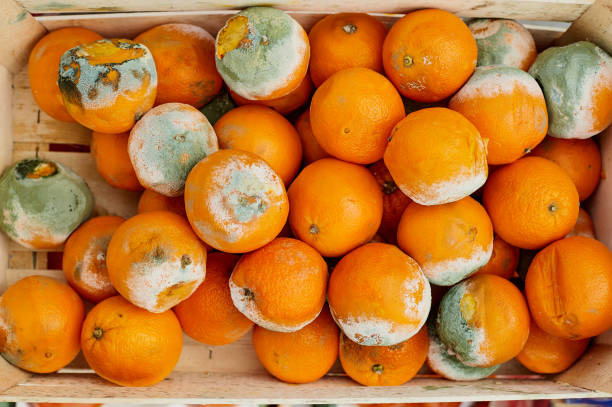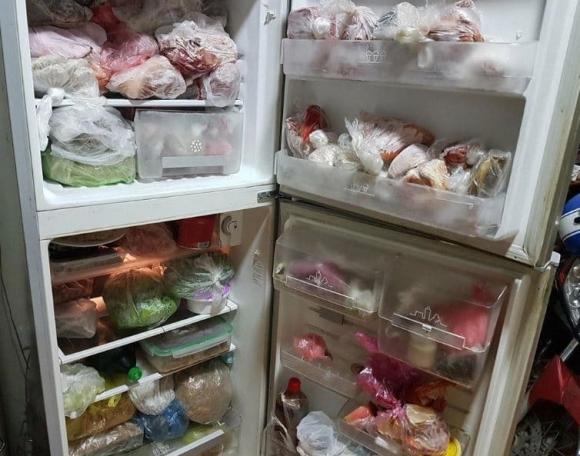The end of the year is an opportunity for the whole family to clean the house together. Be careful to remove these things to reduce the risk of cancer.
Mycotoxins – very powerful carcinogenic “things” that are often overlooked
According to warnings from the World Health Organization (WHO), mycotoxins are toxic compounds naturally produced by some types of fungi. They are especially likely to appear in many foods such as cereals, dried fruits, nuts and spices…
Around us there are hundreds of different types of mycotoxins that have been identified. But the most common types that are harmful to humans and pets are aflatoxin, ochratoxin A, patulin, fumonisins, zearalenone and nivalenol/deoxynivalenol.
 Among them, aflatoxin is the most common type of toxin. The fungi that produce aflatoxins are Aspergillus flavus and Aspergillus parasiticus. Humans can be exposed to aflatoxins by eating moldy foods; or due to consumption of meat and milk by animals consuming moldy foods.
Among them, aflatoxin is the most common type of toxin. The fungi that produce aflatoxins are Aspergillus flavus and Aspergillus parasiticus. Humans can be exposed to aflatoxins by eating moldy foods; or due to consumption of meat and milk by animals consuming moldy foods.
In 1993, aflatoxin was classified as a group 1 carcinogen by WHO. That means, WHO has enough evidence to confirm that aflatoxin can cause cancer in humans.
Aflatoxin is a highly toxic substance. It is 68 times more dangerous than arsenic, 10 times more dangerous than potassium cyanide, and has the ability to seriously destroy liver tissue. Just 1 mg of aflatoxin is enough to cause cancer. The type of cancer that aflatoxins often cause is liver cancer.
 Worth mentioning, this carcinogen exists quite commonly in life, especially some dishes and utensils below. The end of the year is an opportunity for the whole family to clean the house together. Be careful to remove these things to reduce the risk of cancer.
Worth mentioning, this carcinogen exists quite commonly in life, especially some dishes and utensils below. The end of the year is an opportunity for the whole family to clean the house together. Be careful to remove these things to reduce the risk of cancer.
3 familiar family dishes are likely to contain aflatoxins
Broken rice
According to WHO, aflatoxins most often appear in starchy foods like rice. Rice stored in a damp environment or stored for too long is susceptible to changes in texture and mold production.
 Signs of moldy rice include: Rice changes color from white to yellow or green, has a musty smell… Rice with signs of mold needs to be removed immediately, because even if you wash it with a lot of water or cook it, it cannot remove all the toxins. element. The reason is because the temperature to destroy aflatoxin is 280 degrees Celsius, conventional cooking and processing methods cannot destroy the toxicity of this toxin.
Signs of moldy rice include: Rice changes color from white to yellow or green, has a musty smell… Rice with signs of mold needs to be removed immediately, because even if you wash it with a lot of water or cook it, it cannot remove all the toxins. element. The reason is because the temperature to destroy aflatoxin is 280 degrees Celsius, conventional cooking and processing methods cannot destroy the toxicity of this toxin.
It is best to only buy enough rice to use for a maximum of 2 months, do not buy and store for too long. Rice should be kept in a dry, clean place.
Moldy fruit
A study by the Chinese Academy of Preventive Medicine showed that: The number of bacteria in moldy fruits only appears in 10-50% of the moldy parts. The remainder will appear scattered in seemingly healthy areas.
In moldy parts of fruit, microorganisms produce aflatoxin, which is known to be a potent liver carcinogen. If a person keeps the habit of eating moldy fruits, it can easily lead to the risk of liver cancer.
 Corn, peanut mold
Corn, peanut mold
If corn and peanuts are stored in damp, unsanitary places, they can easily mold, produce large amounts of aflatoxin and cause liver damage, such as liver cancer. Because aflatoxin spreads in the form of spores, don’t even think about peeling off the mold and continuing to eat it. Instead, definitely throw them in the trash.
2 items in the house are where aflatoxin resides
Wooden cutting board
Wooden cutting boards that have been used for many years may have many cracks, and those cracks contain countless tiny bits of food stuck to them. If a wooden cutting board has mold, it will easily produce aflatoxins, affecting liver and kidney health. Wooden cutting boards and chopsticks should be replaced every 6 months or 1 year.
Fridge
Aflatoxin loves moist, food-rich environments like refrigerators. According to a survey by the University of Arizona (USA), the probability of detecting mold in the compartment and padding of the refrigerator is 83%. Every time the refrigerator door is opened, the mold spreads and “expands” more.

Refrigerators that have not been cleaned for a long time are places that contain a lot of food that has white mold, fermented and has a sour smell, which can produce aflatoxin. To prevent mold, housewives should keep the habit of cleaning the refrigerator once a week.












